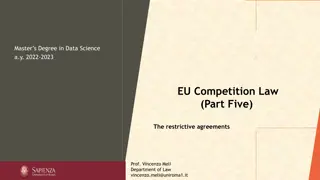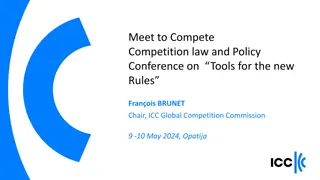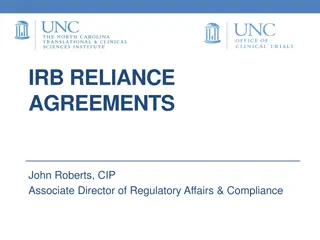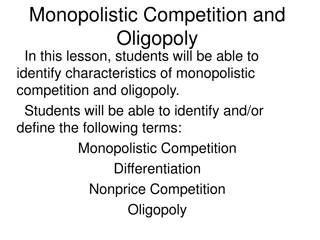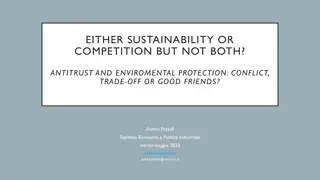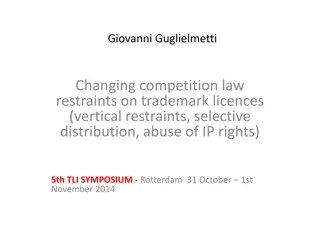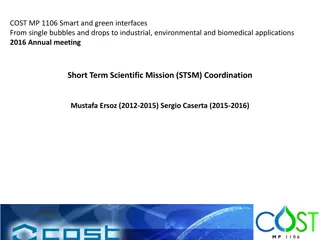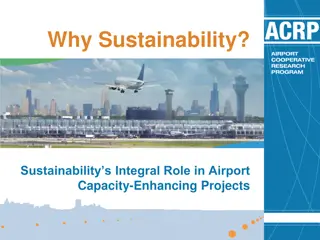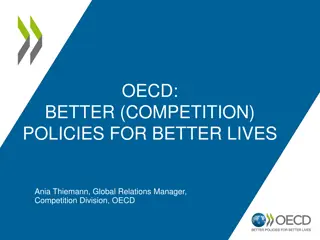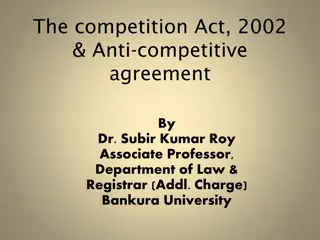Navigating Sustainability Agreements in Competition
Delve into assessing agreements among competitors towards sustainability objectives. Explore concerns, implications, and the need for cautious evaluation.
Download Presentation

Please find below an Image/Link to download the presentation.
The content on the website is provided AS IS for your information and personal use only. It may not be sold, licensed, or shared on other websites without obtaining consent from the author. Download presentation by click this link. If you encounter any issues during the download, it is possible that the publisher has removed the file from their server.
E N D
Presentation Transcript
Sustainability Agreements assessment of agreements between competitors that pursue one or more sustainability objectives Discussion by Natalia Fabra EAGCP, June 2022
Overview Overarching question: How competition rules can help sustainability Main objective: Provide more clarity in the guidance on horizontal agreements between competitors with a sustainability objective Soft safe harbor for sustainability standards Transparent, non-compulsory, open, with a monitoring system, should not involve info exchange and not lead to high price increases 2
Article 101(3) Some restrictive agreements may generate economic benefits > negative effects of the restriction of competition Cumulative conditions for the exemption: 1. Efficiency gains 2. Benefit to consumers (in the relevant market) 3. Indispensability 4. No elimination of competition 3
Major concerns 1. Cartel greenwashing Anticompetitive agreements might hide under the green label Communication among competitors, even if for good reasons, might trigger anticompetitive coordination in other directions Unclear why sustainability would merit a distinct treatment other than the attempt to soften competition rules 2. It might play against sustainability Competition is a major driver of innovation, which is key for sustainability Allowing for competition restrictions might hinder innovation Competition on the sustainability dimension eliminated 4
Major concerns 3. What are firms true intentions? Why would firms collectively care about sustainability? Why are those agreements not achieved through regulation? 4. A cover for price increases? The presumption is that sustainable actions are costly, but how big is the required price increase? Very often, sustainability brings costs down, not up 5
A very cautious assessment of the sustainability agreements is required! 6
Some Remarks Indispensabillity: critical! Dutch coal case (2013): assessment of benefits vs costs, but why was the agreement to close down the coal plants necessary? Washing maching CECED (1999): why is an agreement necessary to stop producing low energy efficient washing machines? Compensating benefits: Is this going to be constantly monitored? Extremely complex to elicit WTP; oftentimes, non-existing products/technologies/materials involved Residual competition: Rare to find cases in which all competition is eliminated Even if residual competition remains, it does not mean it is not harmful 7
Sustainability efforts bring in positive externalities but it is unclear whether the way to foster them is through a lenient interpretation of competition policy 8











